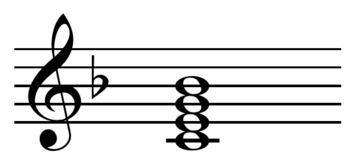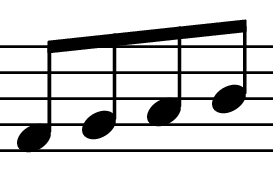photo credit: The old ones are the best via photopin (license)
You're probably wondering what 'shouting music' is, right? Jermaine Griggs says it's a very specific style of gospel playing that is used in church during high periods of praise. Basically, it's real fast!
Most styles of shouting music are real fast, energetic and exciting. If you're interested in learning step-by-step, how to play shouting music by ear, you may want to check out GospelKeys 500
You'll learn:
- How to master shouting music by learning Jermaine's techniques. He breaks shouting music into three key sections: "The Shouting Intro, The Main Loop Period and The Cool Down." You'll explore each part.
- Discover the secrets to effectively playing shouting music and how to properly begin and end your playing naturally. This is one of the most awkward things in shouting music: The beginning and ending.
- The power of the tritones in shouting music and how they allow your right hand to play fast-moving movements, fill-ins, and runs at double the speed!
- How to play common shouting songs like "When I Think of the Goodness of Jesus."
- How to play left-hand bass runs, right hand chordal movements, and fill-ins at high tempos and how to keep the speed of your shouting music consistent at all times!
- The difference between praise songs and shouting music and how to determine whether to play in a linear or non-linear style.
- How to use modulation to increase the intensity of your playing during the highest points of the shouting period. This "constant modulation" is heard in many gospel songs and you'll be able to apply it to your shouting music immediately.
- How to add flavor to your shouting music by exploring various advance techniques like stride piano, modulation, role reversal, linear shouting patterns and more.
- How to play prepared and planned shouts that all instruments can follow (bass, organ, piano, guitar). Learn the ins and outs of changing keys and how to make sure all instruments are on the same page.
- How to start a 'shout' from scratch. It is very difficult for musicians to initially start shouting music during a high praise part of church service.
Left-Hand Bass Runs
There are tons of bass runs that can be used in shouting music. Some runs move downward (from high notes to low notes). Other bass runs move in an ascending direction. In this lesson we'll be in the Key of Ab. Let's learn a few ascending and descending bass runs.
Ascending bass run (1-5)
Ab C Db D Eb F Gb G Ab (Notes played separately)
Descending bass run (1-5)
Ab G F E Eb F Gb G Ab
These bass runs focus on the 1st and 5th keys of the scale. Let's look at the Ab major scale:
Ab Bb C Db Eb F G Ab
If you were to place a number by each of these notes, Ab would have a number 1 by it and Eb would be number 5. Since the bass runs above are both focused on Ab and Eb, they are called "1-5" bass runs. You can also "1-4" bass runs in shouting music.
Ascending bass run (1-4)
Ab B B C Db F Gb G Ab
Descending bass run (1-4)
Ab Gb Eb D Db F Gb G Ab
Practice these with a metronome. This device keeps rhythm for you at different speeds. You can choose the tempo so you can start off slow and build your speed as you get better.
Right-hand chordal movements
While there are tons of things to do on your right hand, understanding how '13th' chords work is essential. A thirteenth chord is built on the (1), (3), (5), (b7), (9), (11), and (13) tones of a major scale.
In C major that would be:
C + E + G + Bb + D + F + A
Play the C on your left hand and just play Bb + D + F + A on your right hand. If you can reach, try adding in a high C and playing Bb + D + F + A + C.
C13 = C/BbDFA (C)
Ab13 = Ab/GbBbDbF (Ab)
Playing an Ab13 in a rhythmic fashion over an Ab ascending or descending bass run is the foundation of shouting music. This combination, alone, can be played the entire time. The only thing is... Because shouting music is so repetitive (it's generally the same bass run over and over), you want to include other things (like variations in bass runs and different right-hand chordal movements and fill-ins) to spice things up.
Three Main Parts of Shouting Music
1. The Intro
2. The Main Loop Period
3. The Cool Down
Part One: The intro
The intro is the start of the 'shouting' period. You won't find full-length ascending and descending bass runs here. Instead you have teasers like:
C -- Db -- D -- Eb. Usually the C and Db are played in pairs and the D and Eb are played in pairs. That's your left hand. As for your right hand, you'll play something like:
Bb Eb Ab (over the C bass from above)
B Eb F Ab (over the Db bass from above)
B D F Ab (over the Eb bass from above)
This generally repeats for a good amount of time. The main loop period will usually follow right after.
Part Two: The Main Loop Period
This is the moment of your shouting music when the bass run is fully active unlike the 4-note bass runs used in the intro. You'll use full-powered ascending and descending bass runs along with right-hand chordal movements. for now, you've learned that the Ab13 chord can be played on your right while running the bass on your left hand. Other concepts covered in GospelKeys 500:
- Diminished chord tricks
- Right-hand fill-ins
- More fill-ins: b3 and b5 fill-ins
- Three "magic" chords
- Pentatonic and blues tricks
- Chromatic drops
Part Three: The Cool Down
The "Cool Down" period is just what it sounds like. It's the moment where the shouting music is coming to an end but instead of just abruptly ending, the cool down period allows you to play certain movements that are less active than the main loop period.
Other concepts covered in GK 500:
- Role Reversal techniques
- Stride / Ragtime Effects
- Linear Shouting Patterns / Vocal Accompaniment
- Modulation
I found this lesson in my notebook awhile back when I was an active member in the gospel community. Hope this lesson helps you in your fast piano playing!
All the best,
"The beautiful thing about learning is that no one can take it away from you." B.B.King



















![Validate my Atom 1.0 feed [Valid Atom 1.0]](valid-atom.png)







